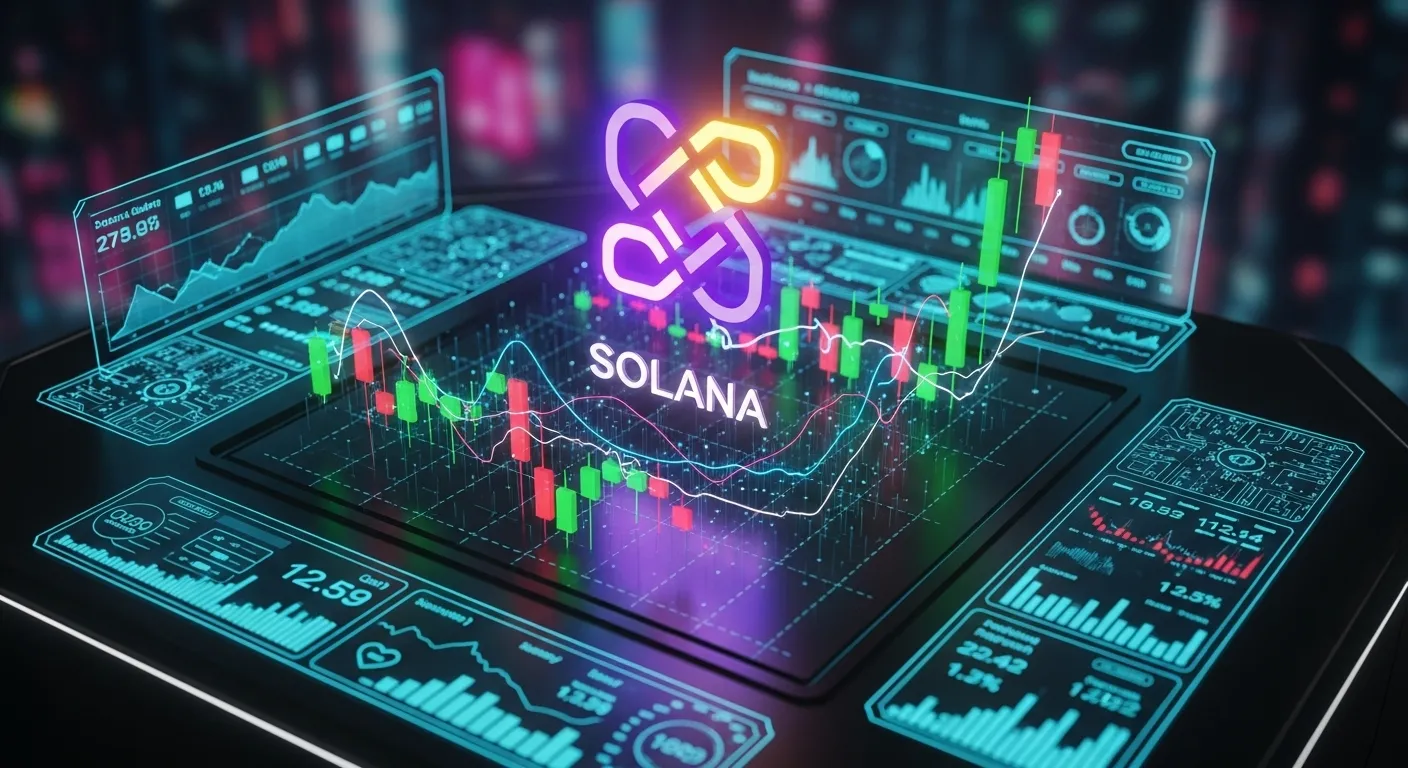Solana (SOL), the high-throughput, low-latency blockchain platform frequently cited as Ethereum's most formidable rival, commenced trading on November 1, 2025, at a price point near 186. The daily candle opened on the GMT timeframe at 187.50, indicating a relatively neutral start following a challenging October where Solana experienced a modest 1% dip. As the market transitions into November, a month historically associated with significant upside opportunities for altcoins, a crucial question arises: Is Solana structurally primed to capitalize on this wave and initiate a powerful rally, or will lingering technical challenges and external macroeconomic pressures impede its path? A comprehensive outlook requires a meticulous examination of the current infrastructure, market fundamentals, and strategic catalysts.
1. Market Data Overview and Technical Analysis
A preliminary analysis of market data highlights deep liquidity and sustained investor interest in Solana. The 24-hour trading volume for the SOL token has reached an impressive 4.87 billion, and its total market capitalization is securely positioned around 103 billion. With 552 million SOL in active circulation, the Relative Strength Index (RSI) is sitting comfortably at approximately 45, which is a key technical signal indicating that the price is not in an overbought territory and possesses ample room for appreciation. Structurally, key support is established at 180, and the primary resistance lies at the 200 psychological level. The Moving Average Convergence Divergence (MACD) indicator is currently flashing a gentle but persistent bullish signal. Technical analysts widely agree that if the price successfully consolidates and holds above the 190 level, the subsequent target will swiftly move toward 210.
2. The Institutional Engine: ETF Inflows and Whale Accumulation
One of the most potent bullish drivers for Solana is the accelerating inflow of institutional capital. Recently, the Total Assets Under Management (AUM) held by Solana-based Exchange-Traded Funds (ETFs) has surpassed the 700 million mark. This substantial influx of funds emphatically validates the growing institutional appetite for the asset. Predictions from major financial analysts, including those at Bloomberg, suggest that the potential launch of Spot SOL ETFs in 2025 could be a definitive, market-shaping event, dramatically amplifying demand. The historical precedent set by the Bitcoin and Ethereum ETF launches demonstrates the transformative impact of regulated financial instruments on a crypto asset's valuation. Solana's core attributes blazing speed and ultra-low transaction costs make it an exceptionally attractive next-generation platform for institutional deployment. Furthermore, evidence of 'Whale' accumulation (wallets holding over 1 million SOL) is compelling; these large holdings have increased by 2%, equating to an additional 1.1 billion worth of tokens added to their portfolios, signaling robust long-term confidence from major market players.
3. Accelerated DeFi Growth and the Firedancer Upgrade
The growth of the Decentralized Finance (DeFi) sector within the Solana ecosystem cannot be overstated. Solana’s Total Value Locked (TVL) has reached a record high of 5 billion. Key projects like Jito and Kamino have been instrumental in doubling trading volumes and liquidity. The Solana network now actively processes an estimated 40% of all DeFi transactions across the entire crypto market, a real-world utility metric that significantly distinguishes it from competitors. The sustainability of this hyper-growth is set to be guaranteed by the eagerly anticipated 'Firedancer' upgrade. This fundamental core update is designed to drastically boost the network’s transaction processing capacity (TPS) to a theoretical limit of 1 million transactions per second. Industry experts suggest that the successful completion of Firedancer could resolve all current scalability concerns and act as a major catalyst, potentially propelling SOL to the 300 price range by the end of the year, as the network’s capacity constraint is effectively eliminated.
4. Macroeconomic Environment and Inherent Risks
Broader global macroeconomic factors also exert significant influence on Solana. The Federal Reserve's rate cuts, for example, typically increase global liquidity, which is often funneled into higher-risk assets like cryptocurrencies. Solana, with its primary focus on scalability and efficiency, benefits directly from this supportive macro environment. However, specific risks must be carefully monitored. Occasional network outages and downtime, though their frequency has decreased recently, along with regulatory uncertainties (particularly surrounding SEC approval for any potential ETFs), continue to introduce elements of sudden volatility. Historically, November has been quite favorable for SOL, recording an average gain of 35% in recent years. Specifically, in November 2024, Solana witnessed a stunning 80% price surge. Currently, with the firm support at 175 holding, the potential for an upside move toward 232, as projected by reputable analysts such as Ali Martinez, remains highly plausible. Conversely, a sudden weakening in Bitcoin's momentum could pose a risk, potentially leading to a drop toward the $160 support level.
5. Ecosystem Innovation and Competitive Challenges
The Solana network is a hub of continuous innovation, driving tangible adoption through projects like the Saga mobile phone and strategic partnerships with traditional financial heavyweights such as Visa for payment solutions. Anatoly Yakovenko, Solana's CTO, has recently emphasized the ecosystem’s strategic pivot towards enhancing user privacy and implementing Zero-Knowledge Proofs (ZK Proofs), positioning Solana as a future-proof platform ready to meet emerging regulatory and technological demands. Nevertheless, competitive challenges persist; intense competition from Ethereum’s Layer 2 solutions and the occasional price reliance on speculative hype driven by meme coins like BONK present structural risks. Recent market behavior illustrates that Solana rapidly mirrors broader crypto market sentiment, often experiencing a quick 5% or greater drop when the overall market turns bearish.
In conclusion, Solana presents an attractive synthesis of high speed, groundbreaking infrastructure innovation, and accelerating institutional adoption. Key catalysts like the anticipated ETFs and the explosive growth in its DeFi sector place it at the cusp of a potentially significant upward movement. Long-term investors may find the current price range suitable for employing a Dollar-Cost Averaging (DCA) strategy during dips, but adherence to portfolio diversification remains essential. November has the potential to be a pivotal and defining month for SOL, making patience and diligent risk management the primary keys to navigating this highly volatile market.
